
All categories
Featured selections
Trade Assurance
Buyer Central
Help Center
Get the app
Become a supplier

(20 products available)













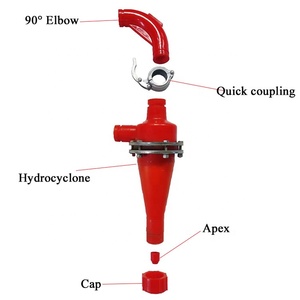
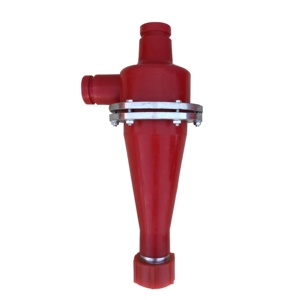

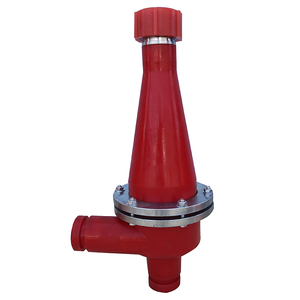
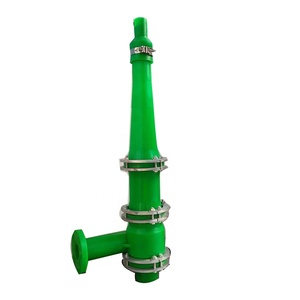
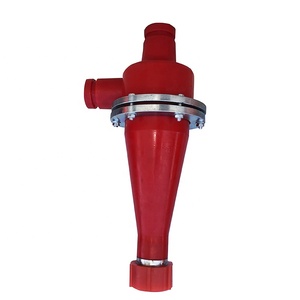























Cyclone separators are of different types based on design, functionality, and application. Please find below some common types of cyclone separators:
The performance of a 100mm cyclone dust separator is greatly influenced by its specifications. Highlights of some specifications and corresponding separator performance are provided in the table below.
Material
The cyclone separator's lifespan will be impacted by the material used to make it. Common materials that are known to last are stainless steel, alloy steel, etc. A separator made of such sturdy materials will withstand the wear and tear of dust abrasion.
Inlet diameter
The primary purpose of a cyclone dust separator is to remove dust, especially fine particles. The fine particles must first enter the separator. The inlet diameter affects the volume of the material entering the separator. This directly influences the velocity of the air inside the cyclone. High velocities should be achieved for effective dust settling.
Height-Diameter Ratio
A height-to-diameter ratio of a separator that favors length rather than width ensures the spiral flow of air inside the separator. The dust particles are made to have downward gravitational force to settle at the waste outlet area.
Outlet diameter
Fine particles must be compressed and released like a rugby ball through a smaller outlet. A cyclone dust separator with a smaller outlet diameter can achieve greater dust particle concentration.
After using the 100mm cyclone dust separator, it is necessary to maintain it so it can function well and for a longer period. One of the simplest maintenance practices is to empty it regularly. Regular emptying prevents the build-up of dust that may give rise to difficult cleaning and superior deterioration. Another uncomplicated yet effective maintenance practice is to inspect the separator routinely. Any signs of cracks, loose connections, or damages should be repaired immediately after discovery. Providing regular inspection and timely repair enhances performance and prolongs life.
100mm cyclone separators are versatile and find application in various industries. Below are some usage scenarios of cyclone dust separators.
The following tips will help business buyers select the right cyclone separator for their intended application.
Understand the application
Get to know the type of solid particles in the air stream, their chemical composition, shapes, and sizes. Determine the quantity of dust that will be separated and the collection method. Know the purpose of the separation. With this knowledge, find the separator that can achieve the desired removal efficiency and air flow rate. Choose a cyclone designed to handle the specific type of particle.
Consider the separator efficiency
Different separators have different efficiencies. Some are better at separating large particles, while others excel at small ones. Focus on the separators that will effectively remove the specific particles in the application.
Think about the handling and storage of separated dust
Apart from finding a cyclone that will separate dust efficiently, also consider how the dust will be manually or automatically handled. If a large volume of dust will be separated, the separator must have a storage bag or drum with a large capacity. Also, choose a separator that will not expose workers to high levels of harmful dust hazards.
Check the cost of the separator
The price of cyclone dust collectors changes based on design, size, materials, and brand. Set a budget for the purchase, but remember that the dust separator plays a vital role in the longevity of business equipment and reducing health hazards. Investing in a high-quality separator may be the better long-term option.
Q1: What is the purpose of a cyclone separator in a chemical process industry?
A1: The cyclone separator plays two critical roles in a chemical process industry. It reduces the downstream air pollution caused by particulate matter. This occurs because the cyclone separator captures all the dust particles before they get released into the atmosphere. Also, it removes solid impurities from gasses or liquids, protecting expensive downstream equipment from abrasion.
Q2: Why are cyclone separators considered environmentally friendly?
A2: Installing a cyclone gas separator in an exhaust duct can help reduce the number of dust particles released into the atmosphere. This is considered a more environmentally friendly option than sedimentation ponds or filtration plants.
Q3: What are the limitations of cyclone separators?
A3: The cyclone gas separator is not suitable for all dusts due to pressure drop limitations. It is more effective for larger particles (around 5 microns) than smaller ones. Also, the separator cannot capture particles below 0.5 microns.